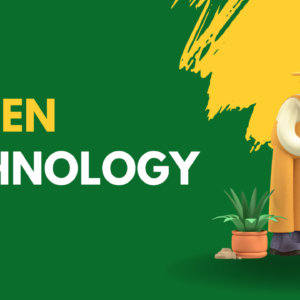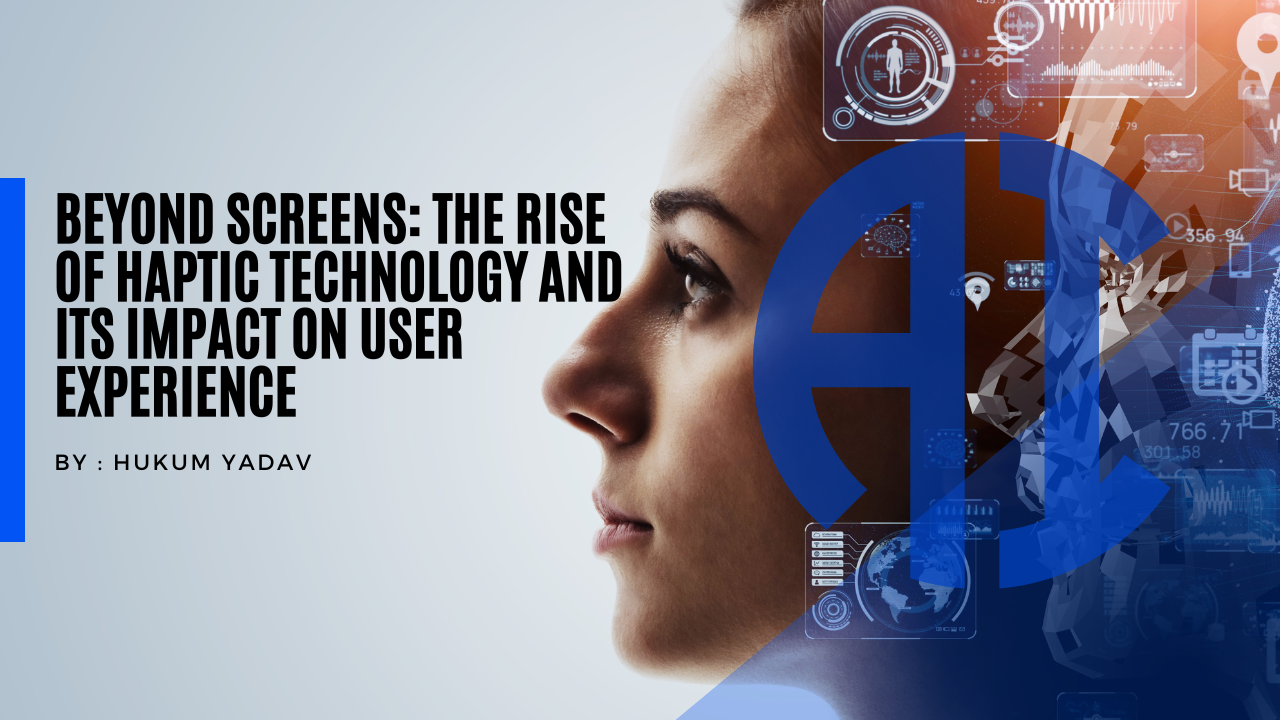Table of Contents
- Introduction
- Understanding Haptic Technology
- Importance of Haptic Technology
- Haptic Technology User Interface Design
- Applications of Haptic Technology in User Experience
- Haptic Technology and Emotions
- The Future of Haptic Technology
- Impact of Haptic Technology on User Experience
- Haptic Technology and Accessibility
- Haptic Feedback in Virtual Reality
- Haptic Technology in Education
- Haptic Technology in Healthcare
- Haptic Technology and Personalization
- Haptic Technology and Sustainability
- Haptic Technology and Privacy
- Haptic Technology and Industry
- The Business of Haptic Technology
- Haptic Technology and User Experience Designers
- Haptic Technology and User Experience Research
As technology continues to advance, traditional screens are no longer the only means of user interaction. The rise of haptic technology has revolutionized the way users interact with digital devices. Haptic technology provides users with a tactile experience, enabling a more immersive and engaging user experience. This article delves into the impact of haptic technology on user experience and its potential applications in various industries.
Introduction
Haptic technology involves the use of touch, vibrations, and force feedback in digital devices to simulate a tactile experience for users. It has evolved to become an integral part of user experience design, enhancing the way users interact with technology beyond screens. The tactile feedback that haptic technology provides has become an essential tool for user interface designers to deliver a more engaging user experience.

Definition of haptic technology
Haptic technology is a technology that uses tactile feedback to simulate touch, vibration, and force feedback sensations to users.
Brief overview of haptic technology’s impact on user experience
Haptic technology has had a profound impact on user experience by providing more immersive and engaging digital experiences. It has revolutionized the way users interact with technology by introducing tactile sensations that simulate physical touch, making it more intuitive and engaging.
Understanding Haptic Technology
This section provides an overview of haptic technology, its history, types, how it works, and its advantages and disadvantages.
Overview of haptic technology
Haptic technology provides users with sensory feedback while interacting with digital devices. It uses sensors and actuators to create realistic physical sensations when a user touches or interacts with a digital device.
History of haptic technology
Haptic technology has been around since the mid-20th century, where it was initially developed for telecommunication systems. Since then, it has evolved and found its way into various applications, including medicine, automobiles, video games, and mobile devices.
Types of haptic technology
There are various types of haptic technology, including vibrotactile feedback, force feedback, and tactile feedback. Vibrotactile feedback produces a vibrating sensation, while force feedback provides resistance when a user interacts with a device. Tactile feedback, on the other hand, reproduces the sensation of texture and temperature.
Working of haptic technology
Haptic technology works by using sensors and actuators to reproduce the sensation of touch, vibration, and force feedback when a user interacts with a device. It captures physical data, such as pressure, temperature, and texture, and then uses actuators to simulate those sensations in response to user input.
Advantages and disadvantages of haptic technology
The advantages of haptic technology include providing a more immersive experience, increasing user engagement, making digital devices more intuitive, and enhancing accessibility. However, the main disadvantage is the high cost of implementation.
Importance of Haptic Technology
This section explores the importance of haptic technology and its potential applications in various industries.
The relationship between haptic technology and human senses
Haptic technology plays a critical role in bridging the gap between technology and the human senses. It enables users to interact with digital devices through touch, vibration, and force feedback, bringing a more human-like experience to technology.
Benefits of haptic technology over traditional screens
Haptic technology provides a more interactive and engaging experience than traditional screens because it enables users to feel the digital content. It is particularly beneficial for people with disabilities, who can interact with digital devices more easily.
The potential of haptic technology in various industries
Haptic technology has the potential to revolutionize various industries, including automotive, healthcare, education, and gaming. In the automotive industry, haptic technology can provide tactile feedback to drivers, enhancing their safety and comfort. In healthcare, haptic technology can enable doctors to remotely examine patients.
Haptic Technology User Interface Design
This section focuses on designing interfaces for multi-sensory perception, how haptic interfaces interact with users, design considerations, and challenges while designing a haptic interface.
Designing interfaces for multi-sensory perception
Designers of interfaces must consider how different sensory modalities work together. Haptic technology can reinforce or contradict other senses, and designers must account for these effects.
How haptic interfaces interact with users
Haptic interfaces must be designed to interact with users naturally and intuitively. They should provide feedback that is consistent with the user’s expectations and reinforce the digital content the user is interacting with.
Design considerations and challenges while designing a haptic interface
Designing a haptic interface poses several challenges, including selecting the right type of technology, managing latency and response time, and ensuring the feedback is strong enough to be noticeable.
Applications of Haptic Technology in User Experience
This section explores some practical applications of haptic technology in user experience, such as in mobile devices, gaming, the automotive industry, and for visually impaired individuals.
Haptic technology in mobile devices
Haptic technology in mobile devices provides users with a more immersive and engaging experience by providing tactile feedback. It also enhances accessibility for people with disabilities.
Haptic feedback in video games
Haptic feedback has become an essential component of gaming. It provides an immersive experience for gamers, enhances gameplay, and provides feedback to players about their actions.
Haptic technology in automotive technology
Haptic technology can provide drivers with tactile feedback, making driving safer and more comfortable. It can also prevent drivers from being distracted and help them navigate better.
Haptic technology for the visually impaired
The Haptic technology can provide visually impaired individuals with tactile feedback, enabling them to interact better with digital devices.
Haptic Technology and Emotions
This section explores how haptic technology impacts emotions and how it can be used to evoke emotions in users.
Understanding the role of haptic technology in evoking emotions
Haptic technology can be used to evoke emotions by providing the user with tactile feedback that simulates physical sensations.
Significance of emotional engagement for user experience
Emotional engagement is essential for the success of digital products. Haptic technology can provide a more emotional and engaging experience, which can help drive customer loyalty and satisfaction.
Impact of haptic feedback on emotions while using technology
Haptic feedback can influence users’ emotions while interacting with digital devices. It can influence their perception of the device’s quality and the experience they have while using it.
The Future of Haptic Technology
This section explores the future of haptic technology, including recent advancements, emerging trends, potential applications, and barriers.
Recent developments and advancements in haptic technology
Haptic technology has seen significant advancements in recent years, with the development of more sophisticated sensors, actuators, and controllers that provide greater immersion and engagement.
Emerging trends of Haptic Technology
Trends in haptic technology include the development of more accurate sensors and actuators, the integration of haptic technology with other modalities, and the use of artificial intelligence to enhance the experience further.
Possibilities for haptic technology in the near future
The possibilities for haptic technology in the near future are vast and include applications in virtual reality, robotics, and healthcare.
Barriers to haptic technology
There are several barriers to the widespread adoption of haptic technology, including technical, practical, legal, and ethical barriers.
Impact of Haptic Technology on User Experience
This section examines the impact of haptic technology on user experience, including user satisfaction and engagement, perception of product quality, and factors that affect the impact of haptic technology on user experience.
Impact on user satisfaction and engagement
Haptic technology has a positive effect on user satisfaction and engagement by providing a more immersive and engaging experience. It also enhances accessibility, making it easier for people with disabilities to use digital devices.
Impact on perception of product quality
Haptic feedback can influence users’ perception of product quality by providing a more engaging and tactile experience. This can help drive brand loyalty and customer satisfaction.
Factors that affect the impact of haptic technology on user experience
Factors that affect the impact of haptic technology on user experience include the type of haptic feedback used, the degree of realism, and the context of use.
Haptic Technology and Accessibility
This section examines the impact of haptic technology on accessibility, including its advantages for individuals with disabilities.
How haptic technology impacts accessibility
Haptic technology can enhance accessibility for people with disabilities by enabling them to interact with digital devices more comfortably.
Advantages for individuals with disabilities
Haptic technology can be customized to meet the needs of people with disabilities, providing them with a more engaging experience.
Haptic Feedback in Virtual Reality
This section explores haptic feedback in virtual reality, including the importance of haptic feedback, current haptic technology, and future developments.
Overview of virtual reality
Virtual reality provides users with a simulated reality that is completely immersed in a digital environment.
Importance of haptic feedback in virtual reality
Haptic feedback is critical for providing a more engaging and immersive virtual reality experience. It enables users to interact with virtual objects and characters in a more natural and engaging way.
Current haptic technology in virtual reality
Haptic technology in virtual reality is primarily through gloves and body suits that simulate tactile feedback.
Future of haptic technology in virtual reality
The future of haptic technology in virtual reality includes the development of more sophisticated devices, the integration of haptic technology with other modalities, and the use of artificial intelligence to enhance the experience even further.
Haptic Technology in Education
This section explores the use of haptic technology in education, its impact on the classroom experience, and its benefits.
Use of haptic technology in education
Haptic technology can provide a more engaging and interactive learning experience for students, enhancing their understanding and retention of course material.
Improving classroom experience using haptic technology
Haptic technology can make classes more interactive and engaging, making it easier for students to learn and understand complex concepts.
Benefits of haptic technology in education
The benefits of haptic technology in education include enhanced engagement, student participation, and improved academic performance.
Haptic Technology in Healthcare
This section explores haptic technology in healthcare, its applications, and its advantages.
Overview of haptic technology in healthcare
Haptic technology is being used increasingly in healthcare to enable doctors to remotely examine patients and provide tactile feedback during surgeries.
Applications of haptic technology in healthcare
Applications of haptic technology in healthcare include simulating surgeries, teaching medical students, and remotely monitoring patients.
Advantages of haptic technology in healthcare
The advantages of haptic technology in healthcare include improved patient outcomes, better training for medical personnel, and reduced healthcare costs.
Haptic Technology and Personalization
This section explores how haptic technology can be used for personalization, including customization and tailoring user experiences.
Customization using haptic technology
Haptic technology can be used to customize and personalize digital devices to meet individual user needs.
Tailoring user experience with haptic technology
Haptic technology can be used to tailor user experiences by providing feedback that is specific to a user’s preferences.
Future possibilities of personalization using haptic technology
The future of personalization using haptic technology includes the integration of haptic technology with other modalities to provide a more personalized experience.
Haptic Technology and Sustainability
This section looks at how haptic technology can enhance sustainability in technology, reduce e-waste, and promote environmentally friendly practices.
Environment-friendly aspects of haptic technology
Haptic technology promotes environmentally friendly practices by reducing the amount of e-waste produced.
Reducing e-waste through haptic technology
Haptic technology reduces e-waste by providing a more sustainable user experience that does not require frequent replacement of digital devices.
Potential of haptic technology to increase sustainability in technology
Haptic technology has the potential to promote sustainability in technology by providing a more engaging and longer-lasting experience.
Haptic Technology and Privacy
This section explores the privacy implications of haptic technology and how designers can ensure data security.
Privacy implications of haptic technology
Haptic technology can present privacy implications, particularly in cases where it collects sensitive data such as biometric data.
Ensuring data security and privacy with haptic technology
Designers can ensure data security and privacy by using secure data storage, encryption, and other security protocols.
Legal implications of haptic technology and privacy
Haptic technology must comply with data protection laws, particularly when it involves collecting sensitive data such as biometric data.
Haptic Technology and Industry
This section examines the impact of haptic technology on various industries, its adoption, and usability.
Impact of haptic technology on various industries
Haptic technology has the potential to revolutionize various industries, including automotive, healthcare, education, and gaming.
Adoption and usability of haptic technologies in industries
The adoption of haptic technology varies across industries, with some embracing it more than others. Usability also varies, with designers facing design challenges specific to each industry.
Key sectors for the application of haptic technology
The key sectors for the application of haptic technology include healthcare, automotive, education, gaming, and retail.
The Business of Haptic Technology
This section explores the market size and growth of haptic technology, key players in the market, revenue generation, and challenges and opportunities for haptic technology.
Market size and growth of haptic technology
The haptic technology market is expected to grow significantly in the coming years, driven by advancements in technology and the increasing demand for more engaging user experiences.
Key players in the haptic technology market
There are several key players in the haptic technology market, including Immersion Corporation, Tanvas, Ultraleap, and Hap2U.
Revenue generation from haptic technology
Revenue generation from haptic technology is expected to grow as more industries embrace haptic technology and consumers demand more engaging experiences.
Challenges and opportunities for haptic technology
The challenges facing haptic technology include the high cost of implementation, technical barriers, and slow adoption rates across some industries. Opportunities include expanding into new industries and leveraging artificial intelligence to enhance the haptic experience further.
Haptic Technology and User Experience Designers
This section examines what designers can expect when designing for haptic technology and the skills required for designing haptic interfaces.
Preparing designers for haptic technology
Designers must be prepared to design for haptic technology by having a strong understanding of the technology, its applications, and design principles.
What to expect when designing for haptic technology
Designers must design for a more tactile experience, which requires them to incorporate various sensory modalities into their design.
Skills required for designing haptic interfaces
The skills required for designing haptic interfaces include an understanding of human perception, understanding of haptic technology, and knowledge of design principles.
Haptic Technology and User Experience Research
This section explores research areas in haptic technology, the impact of haptic technology on user experience research, and future prospects.




